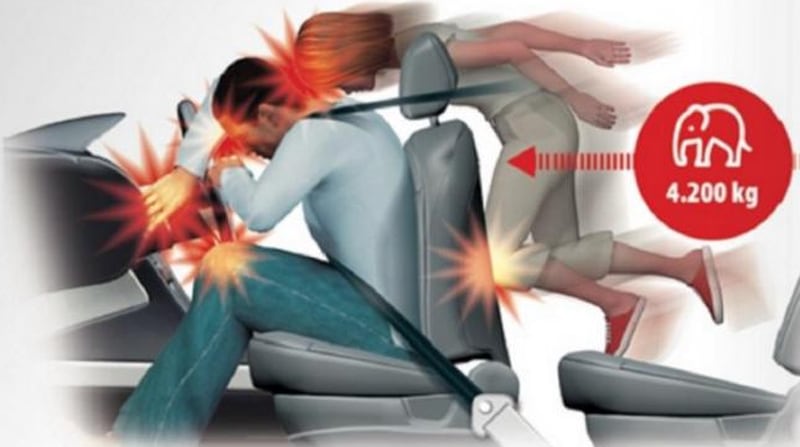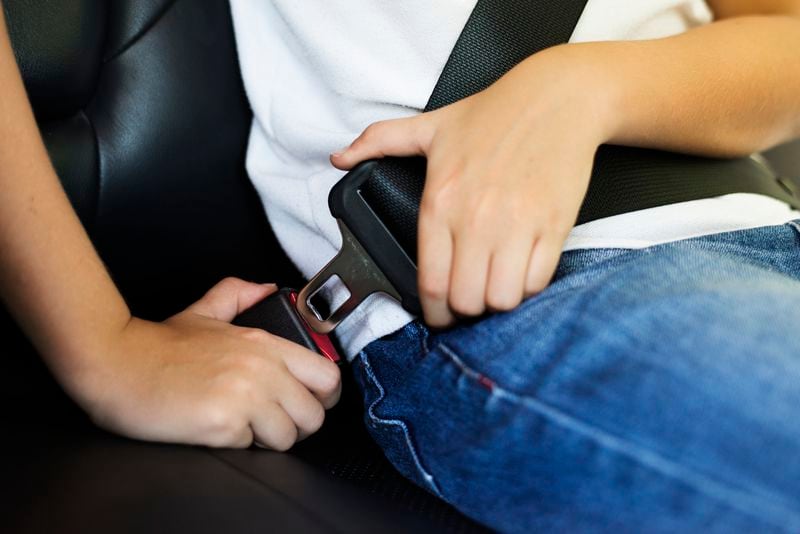This is a dangerous phenomenon which could occur to rear seat occupants in the event of an accident.
A weekend of heavy traffic on the roads is approaching. From the capital alone, it is estimated that 520,000 vehicles will leave these National holidays . The authorities therefore called on motorists to drive responsibly and patiently.
All the more so, if we take into account the figures for the number of deaths on these dates in road accidents during the year 2022, while, according to the records of the National Road Safety Commission (Conaset) , 38 people died, 12 more than the previous year. The story of the historic road safety spot that Conaset brings to life with Guido Vecchiola
It is not only about the driver driving responsibly, but also the passengers traveling safely. By this we primarily mean that all vehicle occupants are using seat belts, as well as that children are in their appropriate restraint seats.
And, according to the WHO, using a seat belt and child restraint system halves the risk of dying in a road accident.
Elephant effect
A study carried out by Conaset showed in 2021 that only 21% of rear passengers use seat belts . Meanwhile, only 33% of children and/or babies travel safely in a child restraint system in Chile. National holidays safely: How to use the child seat in the car?
Beyond the obligatory nature of its use and that its non-compliance is punishable by a fine, did you know that the occupants of the rear seats can become real projectiles by not wearing their seat belt in the event of an accident. That’s what we call “elephant effect”.
Named after an old French advertising campaign that said: “Don’t travel with an elephant in the back seat”, this phenomenon occurs when, in the event of a road accident, the passenger in the back seat hits the front passenger with a force equivalent to that of an elephant, while not wearing a seat belt.

In this scenario, in the event of a collision or emergency braking, it is calculated that the body weight is multiplied by the effect of speed. So much so that at 50 km/h, the force with which a rear passenger would hit a front occupant or any part of the car could reach forty times their weight.
So, for example, a person weighing about 75 kilos could produce a force of 4,200 kilos against the front seat in a collision at just 60 km/h, that is to say as if they were crushed by an elephant .
Any loose object
As might be expected, not only a person could cause the dangerous “elephant effect”, but any loose object in the car. Something we don’t usually think about when we “throw away” everyday objects like keys, a bottle or a bag.
To better understand how a small and light object can impact the weight of a much larger object if the “elephant effect” occurs, the General Directorate of Traffic (DGT) of Spain has provided some examples to this regard.
Thus, and according to the European organization, a 110 gram mobile phone would end up impacting the weight of a rooster (3.9 kilos) at 50 km/h or a Cocker Spaniel (12.5 kilos) at 90 km /h. .
Similarly, a handbag weighing around 4 kilos would become an ostrich (158 kilos) at 50 km/h and a bull (512 kilos) at 90 km/h. The same would happen with a 560 gram tablet, which could have the same impact as a 75 kilo Saint Bernard, while a laptop (2.2 kilos) could multiply its weight to reach 275 kilos. ‘a brown bear.
Surprising, right?
How to avoid it
Although it may seem obvious and silly, the so-called “elephant effect” can be avoided by the simple fact that everyone in the car wears their seat belt. Something that seems simple, but which, according to statistics and practice, is not achieved.
“The seat belt is the most important protective element of the vehicle and the most effective in preventing injury or even death in the event of a road accident. Even though, after many years, the use of seat belts has been internalized by drivers, other occupants are still little aware of it and are alarmingly lacking in habit. Those who do not use this device in the rear seats are four times more likely to be killed or seriously injured, as they are more likely to be thrown through the windshield or hit the car’s interior hard. “, explains Alberto Escobar, director of mobility of the Automobile Club of Chile.

“Our studies reveal that 90% of car occupants do not use seat belts in the rear seats, which is an even more worrying figure when more than 200 road accidents occur daily in our country,” adds- he.
“Historically, awareness campaigns in Chile have always targeted the use of this restraint system by those who drive and have never reinforced its use by those who occupy other seats in the car. For this reason, and although Chileans are, for the most part, resistant to anything that requires us to change our road behavior, it is essential that controls in this regard are increased. There is evidence that to the extent that controls are maintained and increased, the habit is incorporated,” he concludes.
Source: Latercera
I am Robert Harris and I specialize in news media. My experience has been focused on sports journalism, particularly within the Rugby sector. I have written for various news websites in the past and currently work as an author for Athletistic, covering all things related to Rugby news.


